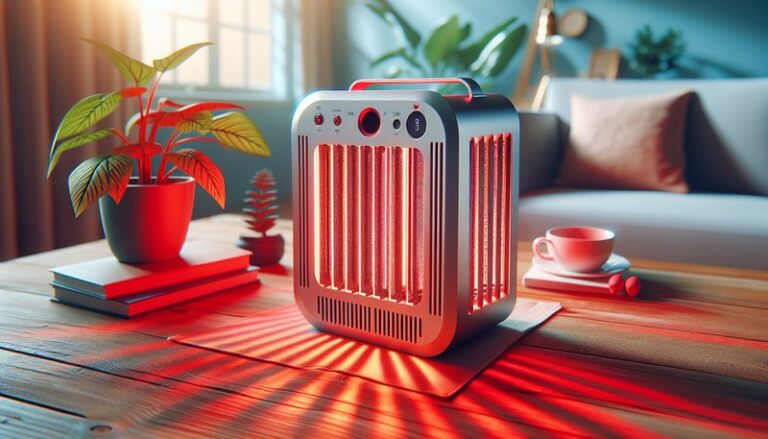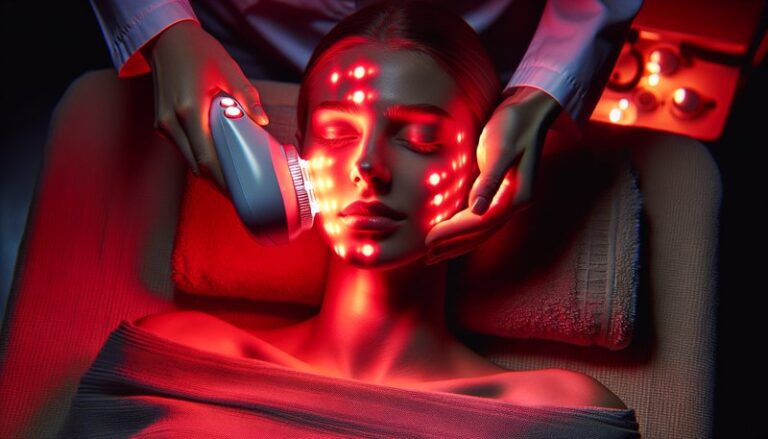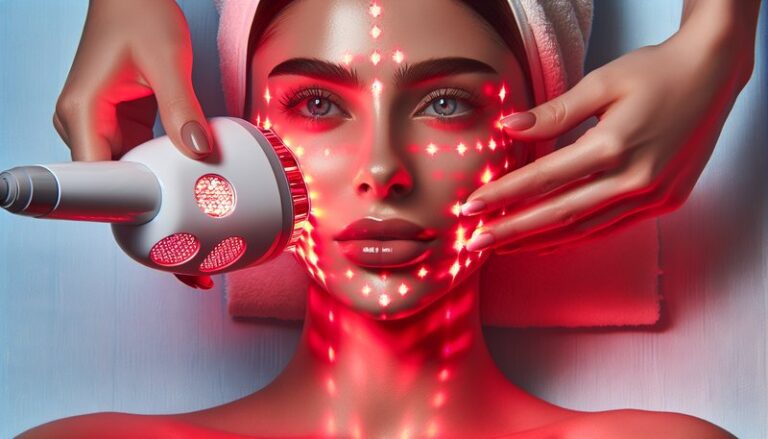How Effective Is Red Light Therapy?
Have you ever wondered if red light therapy really works? As health trends continue to evolve, many are seeking alternative treatments for common ailments, and red light therapy has emerged as a popular option. This article will dive into the effectiveness of red light therapy, exploring its benefits, considerations, alternatives, and answering common questions, providing a comprehensive overview for those curious about this innovative treatment.
Key Takeaways
- Red light therapy is a non-invasive treatment used to improve skin health, reduce inflammation, and promote healing.
- Numerous studies support the benefits of red light therapy in pain management and wound healing.
- Users should consider safety, device quality, and treatment protocols when considering red light therapy.
What is Red Light Therapy?
Red light therapy (RLT), also known as low-level laser therapy (LLLT) or photobiomodulation, involves the use of low-wavelength red light to treat various health conditions. This type of therapy is believed to work by stimulating the mitochondria in cells, enhancing their energy production and promoting healing.
The therapy can be administered in various forms, including handheld devices, light panels, and larger machines used in professional settings. By penetrating the skin at different depths, red light therapy can target issues such as skin rejuvenation, pain relief, and inflammation reduction.
What are the Benefits of Red Light Therapy?
There are numerous advantages associated with red light therapy, ranging from aesthetic improvements to pain management. The following sections detail some of these benefits.
Pain Relief and Inflammation Reduction
Red light therapy has been shown to reduce pain and inflammation in numerous studies. It can be beneficial for conditions like arthritis, tendonitis, and joint pain. By promoting circulation and cellular repair, it helps alleviate discomfort, making it a popular choice among athletes and those with chronic pain conditions.
Skin Rejuvenation and Anti-Aging
Many people turn to red light therapy as a non-invasive method for improving skin health. It has been found to stimulate collagen production, which can improve skin texture, reduce fine lines, and promote a youthful appearance. Reports from users suggest improvements in conditions like acne and psoriasis as well.
Find out the specifics in Red Light Therapy Contraindications
Wound Healing and Recovery
Red light therapy has shown promise in accelerating the healing of wounds and injuries. Clinical studies indicate that it can enhance tissue repair and regeneration by increasing blood flow and cellular activity. This makes it a valuable tool for post-surgery recovery and rehabilitation.
Improved Hair Growth
Emerging research indicates that red light therapy may stimulate hair growth for individuals experiencing hair loss. By improving circulation and reducing inflammation in the scalp, it provides a potential treatment for conditions like androgenetic alopecia.
Increased Energy Levels
Some users report enhanced energy levels following red light therapy sessions. This increase in vitality is attributed to improved mitochondrial function, as the therapy boosts ATP production, the energy currency of cells.
Is it Possible to Use Red Light Therapy at Home?
Using red light therapy at home is not only feasible but has become increasingly popular with the availability of consumer-grade devices. These devices range from handheld wands to full-body panels that can be used conveniently in the comfort of your own space.
What are the Advantages of Home Use?
Access to home red light therapy devices allows for consistent treatment without the need for frequent clinic visits. This can save both time and money. Moreover, the convenience of at-home use makes it easier for individuals to incorporate into their daily routine, enhancing adherence to recommended treatment protocols.
What are the Disadvantages of Home Use?
While home use is appealing, there are potential downsides. Many at-home devices may not deliver the same intensity or wavelength as professional-grade machines. Additionally, proper usage and knowledge of treatment protocols are crucial to achieve therapeutic effects, which can be challenging for some users.
What are the Things to Consider Before Starting Red Light Therapy?
Before beginning red light therapy, there are several important factors to keep in mind to ensure a safe and effective treatment experience.
Device Quality
It is essential to research the quality of the red light therapy device you plan to use. Look for reputable brands that provide clear specifications regarding wavelength, intensity, and safety features.
Consultation with a Healthcare Provider
Consulting with a healthcare provider before starting red light therapy is crucial, especially if you have existing health conditions, are pregnant, or are taking medications that may be affected by light exposure.
Understanding Treatment Protocols
Educating yourself on the appropriate treatment protocols—such as duration, frequency, and distance from the device—is vital. Following these guidelines can enhance efficacy and minimize potential side effects.
Allergies and Skin Sensitivity
Consider any allergies or skin sensitivity you may have. Testing a small patch of skin before full application can help gauge your skin’s reaction to the therapy.
What are the Alternatives to Red Light Therapy?
If red light therapy isn’t the ideal choice for you, several alternative treatments exist, offering various benefits for similar conditions.
Laser Therapy
Similar to red light therapy, laser therapy can penetrate deeper into tissues and is often used for pain relief and skin conditions. However, it typically requires a skilled professional to administer.
Ultrasound Therapy
Ultrasound therapy uses sound waves to promote healing and reduce pain. It’s frequently used in physical therapy settings, providing another non-invasive option for recovery.
Cryotherapy
Cryotherapy involves exposing the body to cold temperatures to reduce inflammation and pain. It is often used by athletes to aid in muscle recovery and reduce soreness.
Acupuncture
Acupuncture is a traditional Chinese medicine practice that involves the insertion of thin needles into specific points on the body. It has been shown to relieve various types of pain and promote healing.
Conclusion: Is it Recommended to Use Red Light Therapy?
Red light therapy has shown considerable promise in various areas, such as pain management, skin rejuvenation, and wound healing. While it is generally safe and effective for many users, it’s crucial to consider device quality, treatment protocols, and individual health conditions before starting. Overall, if approached correctly, red light therapy can be a valuable addition to your wellness routine.
Get the complete picture Is Red Light Therapy Harmful?
Frequently Asked Questions
How long does it typically take to see results from red light therapy?
Results vary by individual and condition, but many report noticeable improvements within a few weeks of consistent treatment.
Is red light therapy suitable for all skin types?
Yes, red light therapy is generally safe for all skin types. However, individuals with specific skin conditions or sensitivities should consult with a dermatologist before use.
How often should I use red light therapy?
Depending on the condition being treated, frequencies can range from a few times a week to several sessions per day. Adhering to specific treatment protocols is essential for optimal results.
Are there any side effects associated with red light therapy?
Red light therapy is considered safe, but some users may experience mild discomfort, skin redness, or increased sensitivity following treatment.
Can I combine red light therapy with other treatments?
Yes, red light therapy is often used in conjunction with other treatments, such as physical therapy or topical applications, for enhanced effectiveness. However, it’s advisable to consult with a healthcare professional before combining therapies.






